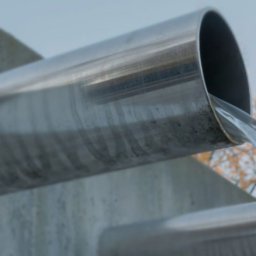It’s certain that over the next few years, virtually each and every automobile manufacturer will introduce a plug-in hybrid or battery electric vehicle (EV). With 250,000 EVs sold in 2015—double the number from the previous year—the market has already shown a promising growth rate.
While interest in EVs is particularly great among eco-conscious consumers, they are not the only ones wanting to get behind the wheel of these industry disrupting vehicles. Early adopters are drawn to technological advances that are making EVs increasingly practical, while frugal travelers see them as a buffer against gasoline price hikes.
One advantage of electric cars is the potentially available infrastructure. After all, electrical power grids are nearly ubiquitous. In order to support the adoption of EVs, there is a need for the expansion of charging infrastructure, which can range from household electrical plugs to high power appliances that could eventually replace today’s gasoline pumps.
This electric vehicle charging infrastructure market is still fairly limited, but has great potential for growth in the coming years. In fact, all over the world, the EV market and charging infrastructure are coming to life.
A variety of players, including governments, car companies, blue chips and startups, are now working to build a universal EV charging infrastructure. So much so that the charging station market is expected to grow to more than 4.5 million units by 2021, with sales revenues estimated to reach $10.4 billion in Europe, the Middle East and Africa, according to a report from IMS Research.
Ready, Set, Charge!
In the EV world of the future, on-the-go fast charging solutions will no doubt be necessary, but the most common charging configuration is likely to be the slow-charging device for home and work because of its convenience and cost efficiency.
Today, all mainstream EVs can “slow charge” (over several hours) from a general-purpose 110V/240V household electrical outlet. In fact, for the most basic slow charge (single-phase charging at less than 16A), all that is required is an adaptor cable to connect the car to the outlet. However, charging at locations as essential as home and work must not only be practical, but also effective.

As such, POSCO has recently put efforts into developing an EV slow-charging device that is scheduled to be released in 2016. In doing so, the company will be able to engage the market for the first time, while also expanding it with products that incorporate World Premium (WP) steel materials. In this way, POSCO is differentiating itself from other corporations, securing product and brand competitiveness in the EV charging infrastructure market.
A New Steel Solution
In July of last year, the Design Solution Task Force of the Structure Research Group in POSCO’s Steel Solution Marketing Department discovered the potential demand for steel in the EV charging infrastructure market. They soon collaborated with POSCO ICT to develop EV charging service designs, and set out to upgrade the quality of the existing market products.
The company then developed an EV slow-charging device that is a hybrid of wall-mounted and free-standing devices to enhance the productivity and efficiency of the product. Considering that each EV manufacturer has a different form of charging cable, this new device can simultaneously charge two vehicles at once by applying two channels (5-pin and 7-pin).
 While many other products on the market tend to adopt the powder coating method on general cold-rolled (CR) steel, POSCO applied its PossSD surface processing material to sustain the natural texture of the steel and emphasize the product as a premium one. PossSD, which was named the Innovation of the Year by the World Steel Association in 2015, consists of lean duplex stainless steel with super ductility using a strip-casting process that can directly produce hot-rolled coils in molten steel without a separate process.
While many other products on the market tend to adopt the powder coating method on general cold-rolled (CR) steel, POSCO applied its PossSD surface processing material to sustain the natural texture of the steel and emphasize the product as a premium one. PossSD, which was named the Innovation of the Year by the World Steel Association in 2015, consists of lean duplex stainless steel with super ductility using a strip-casting process that can directly produce hot-rolled coils in molten steel without a separate process.
In addition to adding an unrivaled aesthetic to the devices, PossSD has also increased cost competitiveness by significantly reducing the content of expensive raw materials such as nickel and molybdenum while sustaining the general stainless steel grade’s moldability and corrosion resistance. As such, POSCO is now more likely to secure marketability and market share by addressing the issue of corrosion caused by the external environment.
Driving Design
Furthermore, POSCO jointly developed a product design with JoongAng Control late last year, and has since completed detail design and prototype production. The corporations also decided to discuss plans for immediate mass production with the goal of initially supplying the product to GM Korea later this year and are currently hoping to diversify the aesthetics of the main body in order to satisfy the diverse needs of clients in the EV charging market.

Starting with this collaboration with POSCO ICT, POSCO plans to expand the scope of design solution applications from EV charging infrastructure to other areas with potential demand such as charger canopies, charging stations and parking towers. Furthermore, the company is endeavoring to respond to the expansion of the future eco-friendly energy market and increase the sales of WP steel materials. As such, POSCO’s future remains bright as ever as the EV market, and subsequently the steel market, continue to grow.
As mainstream original equipment manufacturers begin to mass produce EVs, the role of charging infrastructure will continue to evolve from being an awareness tool to becoming a commercially viable business venture. The roll-out of EV charging infrastructure is essential to the mass adoption of EVs and therefore could prove to be a huge social, political and economic change every bit as important to our society as the introduction of the internal combustion-powered automobile.





